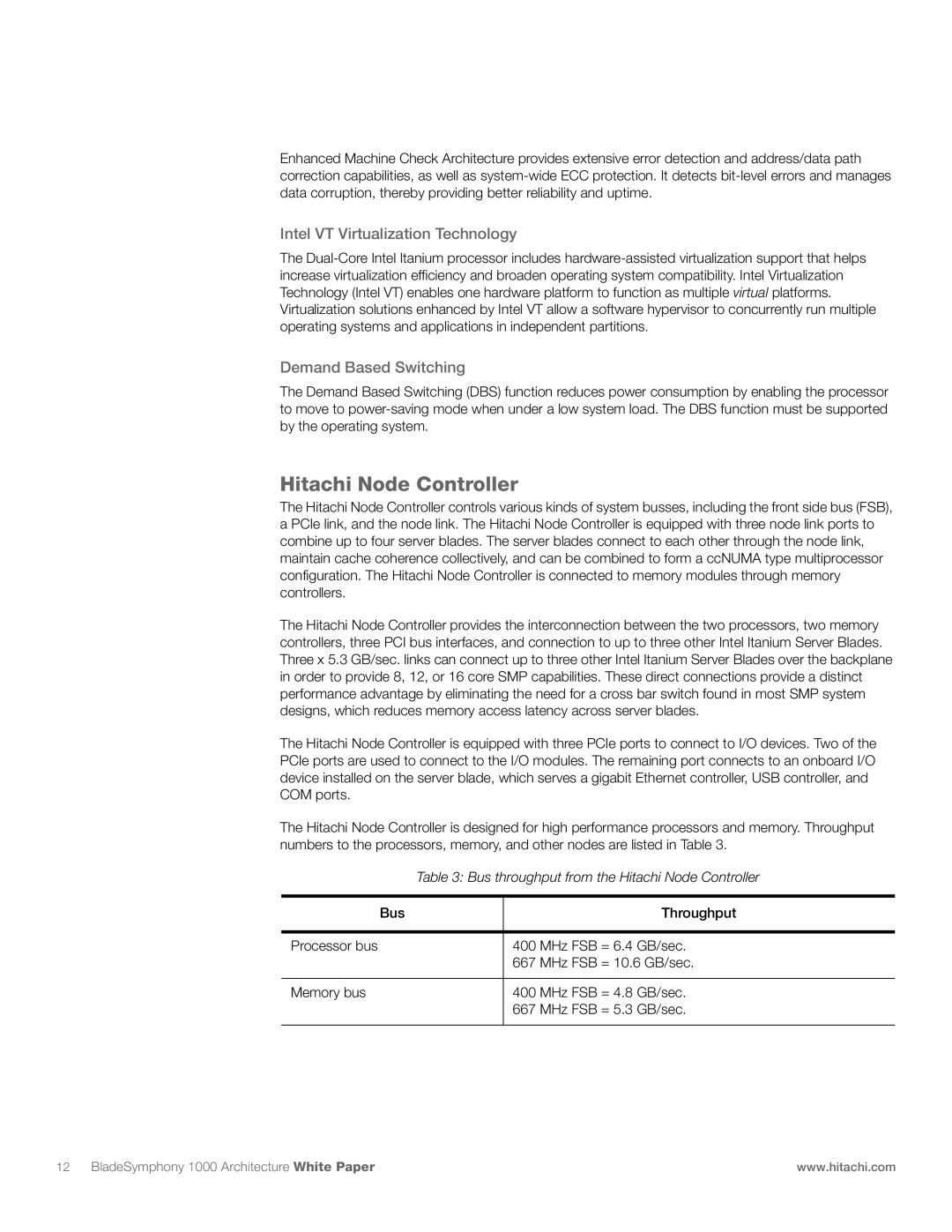Enhanced Machine Check Architecture provides extensive error detection and address/data path correction capabilities, as well as
Intel VT Virtualization Technology
The
Demand Based Switching
The Demand Based Switching (DBS) function reduces power consumption by enabling the processor to move to
Hitachi Node Controller
The Hitachi Node Controller controls various kinds of system busses, including the front side bus (FSB), a PCIe link, and the node link. The Hitachi Node Controller is equipped with three node link ports to combine up to four server blades. The server blades connect to each other through the node link, maintain cache coherence collectively, and can be combined to form a ccNUMA type multiprocessor configuration. The Hitachi Node Controller is connected to memory modules through memory controllers.
The Hitachi Node Controller provides the interconnection between the two processors, two memory controllers, three PCI bus interfaces, and connection to up to three other Intel Itanium Server Blades. Three x 5.3 GB/sec. links can connect up to three other Intel Itanium Server Blades over the backplane in order to provide 8, 12, or 16 core SMP capabilities. These direct connections provide a distinct performance advantage by eliminating the need for a cross bar switch found in most SMP system designs, which reduces memory access latency across server blades.
The Hitachi Node Controller is equipped with three PCIe ports to connect to I/O devices. Two of the PCIe ports are used to connect to the I/O modules. The remaining port connects to an onboard I/O device installed on the server blade, which serves a gigabit Ethernet controller, USB controller, and COM ports.
The Hitachi Node Controller is designed for high performance processors and memory. Throughput numbers to the processors, memory, and other nodes are listed in Table 3.
Table 3: Bus throughput from the Hitachi Node Controller
Bus | Throughput |
|
|
Processor bus | 400 MHz FSB = 6.4 GB/sec. |
| 667 MHz FSB = 10.6 GB/sec. |
|
|
Memory bus | 400 MHz FSB = 4.8 GB/sec. |
| 667 MHz FSB = 5.3 GB/sec. |
|
|
12 BladeSymphony 1000 Architecture White Paper | www.hitachi.com |
